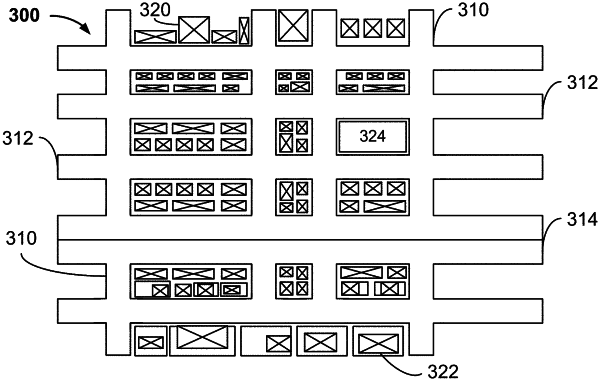| CPC G01C 21/005 (2013.01) [G01N 33/0062 (2013.01)] | 19 Claims |

|
1. A method for associating environmental data with map features, comprising:
receiving sensor data associated with each of a plurality of time intervals from a sensor on a mobile sensor platform, the sensor measuring at least one of a pollutant, a contaminant, or a time-varying component of air at the mobile sensor platform, wherein the receiving of the sensor data associated with each of a plurality of time intervals from the first sensor on a mobile sensor platform comprises:
receiving, associated with a first pass, a first sensor data associated with each of the plurality of time intervals from the sensor on the mobile sensor platform;
receiving position data associated with the plurality of time intervals from the mobile sensor platform;
generating trajectories and corrected locations of the mobile sensor platform for the plurality of time intervals using the position data, comprising:
establishing a trajectory based on position timestamps and GPS data points; and
generating a corrected location based on the established trajectory and other GPS data;
assigning a position of the mobile sensor platform to a corresponding map feature for each of the plurality of time intervals based on the trajectories and corrected locations;
processing the sensor data to generate sensor data values for each of the plurality of time intervals, the sensor data values including at least one value for the at least one of the pollutant, the contaminant, or the time-varying component of the air, wherein the processing of the sensor data to generate the sensor data values for each of the plurality of time intervals comprises: processing the first sensor data to generate a first sensor data value;
assigning the sensor data values to the corresponding map feature of the position of the mobile sensor platform for each of the plurality of time intervals, the at least one value for the at least one of the pollutant, the contaminant, or the time-varying component of the air being assigned to the corresponding map feature; and
repeating the sensor data receiving, position data receiving, trajectories generating, position assigning, sensor data processing and assigning sensor data values for a plurality of passes of the corresponding map feature, wherein the plurality of passes includes the first pass and a second pass, wherein:
the repeating of the sensor data receiving comprises:
receiving, associated with the second pass, a second sensor data associated with each of the plurality of time intervals from the sensor on the mobile sensor platform;
the repeating of the sensor data processing comprises:
processing the second sensor data to generate a second sensor data value; and
the repeating of the assigning of the sensor data values for the plurality of passes of the corresponding map feature comprises:
combining the first sensor data value with the second sensor data value to obtain the sensor data values;
wherein the corresponding map feature has a size based on the sensor that provides the sensor data for the at least one of the pollutant, the contaminant, or the time-varying component of the air.
|